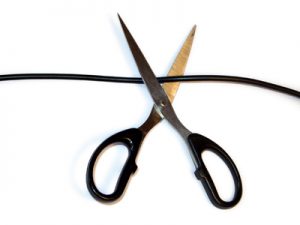
If your property has become overgrown by brush and invasive plant species are taking over, perhaps it’s time to consider goats. Yes…that’s right, goats. These hearty animals will eat a wide variety of weeds which makes them effective eating machines when you need to clear large tracts of land. And, it provides a safe and natural alternative to harmful herbicides. However, the most convincing reason is that you save a ton of money by renting goats for weed control. So, if you are looking for ways to avoid renting machinery or hiring labor, here’s how a herd of goats can eat away at the total expense.
Why Are People Renting Goats?
People have been raising goats for thousands of years. Nowadays, some have used them to create lucrative business opportunities. With the many harmful side effects of harsh chemicals and herbicides, more people are looking for more eco-friendly options. Goats are a natural way to clear brush and overgrown yards or commercial lots.
What makes them so effective is that they will eat just about anything. They will happily munch on the weeds and invasive plant species such as poison ivy, poison oak, sumac, kudzu, milk thistle, knotweed, wisteria, and reed grass, just to name a few. However, some plants are toxic to goats and must be removed before they can graze. But, goats can handle most of the bramble and thorny plants you wouldn’t want to remove by hand.
Although there are many benefits in using goats for weed control, here are some of the most common reasons why people prefer using them:
- Goats quickly clear the land you want to use.
- They provide natural fertilizer and enrich the soil.
- Their hooves till the soil, saving you a ton of labor if you plan to use the area for gardening.
- Goats are excellent climbers, meaning they can reach places machines can’t. So, they are more effective for steep, rocky terrain and wetlands.
- It eliminates the use of herbicides which can harm your health and the environment.
- Targeting grazing is a great preventative measure in areas prone to wildfires.
- Renting goats is much cheaper than hiring a landscaping company.
- You don’t need a permit to let goats graze on your land.
How Can You Save Money by Renting Goats for Weed Control?
Although there are many practical benefits for renting goats, let’s discuss the dollar and cents of it. In addition to all the environmental benefits, here is how you can save money by renting goats for weed control.
1. It is cheaper than paying for a professional landscaping service.
First and foremost, using goats is much cheaper than paying for professional weed removal. Landscaping companies typically charge between $50 and $100 an hour for their services. Depending on the size of your lot and the density of the overgrowth, it might cost you anywhere from $2,000 to $4,000 per acre to clear and remove all the yard waste. On the other hand, you can rent a herd of goats for about $400-$800 per acre. If you go with the goats, you can save a lot of cabbage.
2. There are no disposal fees.
This brings me to the second point: you don’t have to pay for disposal fees. Since the goats are eating the yard waste, there is no debris to burn or haul away. So, you can completely avoid the cost and further reduce the total bill for weed control.
3. They provide free fertilizer to enrich the soil.
Another added benefit is that goats will provide free fertilizer. As any gardener will tell you, nothing beats good, ol’ fashioned fertilizer to enrich your soil. Hiring goats will provide a nutrient-rich base if you want to lay sod or plant a garden in the area they are clearing. So, you can spend less money on expensive potting soils from your local gardening center. And, the goats will even till it into the soil with their hooves, saving a lot of man-hours.
4. You don’t need to buy herbicides for future treatments.
If you rent goats to get rid of your weeds, you don’t need to spend money on herbicides down the line. While more resilient weeds will return, you can clear the majority of your weeds in a single visit. The first time that you use targeted grazing takes the longest since there are years of growth to clear. However, a few more applications should clear all unwanted foliage from your property and eliminate the need to use herbicides.
5. You can save even more if assist.
If you don’t have facilities that are suitable for livestock, it can take some time to prepare. However, some companies may offer a discount for those who are willing to roll up their sleeves and get their hands dirty. With more people to assist, it greatly reduces the time and labor costs of setting up. So, offering to help remove toxic plants, set up electric fences, or feed and water the herd could drastically cut the final costs.
Where Can You Rent Goats?
For those looking to rent goats, you can do a local search to see if there are any goat rental services near you. If you aren’t getting any hits, look up other keywords like “targeted grazing” or “conservation grazing” to widen the search. Be sure you check the reviews to choose the best fit for your job.
However, this is still a relatively new business idea. You can always ask for a referral from someone who knows about renting goats for weed control. Or, you might try contacting local farmers who keep goats. Even if they don’t have a rental company, they may be willing to offer their services for the right price.
Why Aren’t More People Using Goats?
Many people still prefer the fastest and easiest methods for weed control. It takes time for the goats to eat, and even longer when all their favorite vegetation is gone.
Furthermore, using goats won’t give you the same finished look that landscaping companies offer. They cannot distinguish between weeds and manicured landscaping. So, they may decide your shrubs and expensive flowers are more preferable to the weeds you want them to eat. Although it is effective, it isn’t always pretty.
Finally, renting goats is not practical for smaller pieces of property. Most companies have a one-acre minimum for jobs they take. They have a limited number of animals, so they have to choose jobs that will be profitable.
However, if you think goats are the right answer for you, contact local companies for quotes and see just how much you can save!
Read More
- How to Give Your Home Curb Appeal On a Budget
- 7 Surprising Costs of Living in the Suburbs
- How Eating Less Meat Can Increase Savings
Jenny Smedra is an avid world traveler, ESL teacher, former archaeologist, and freelance writer. Choosing a life abroad had strengthened her commitment to finding ways to bring people together across language and cultural barriers. While most of her time is dedicated to either working with children, she also enjoys good friends, good food, and new adventures.



